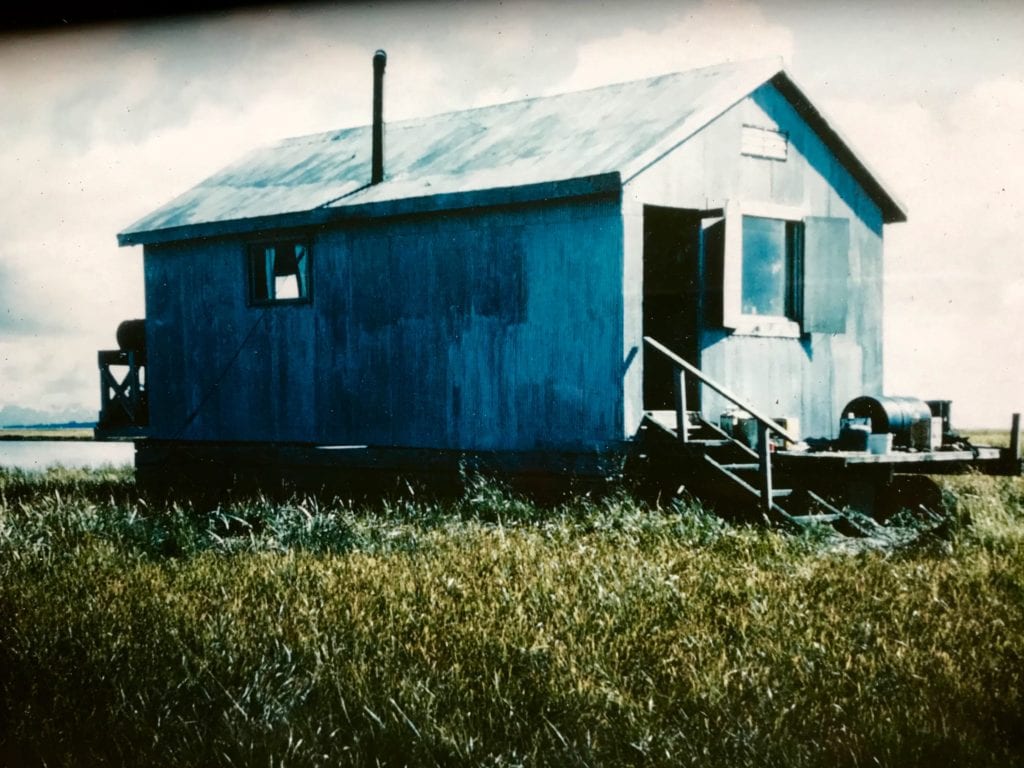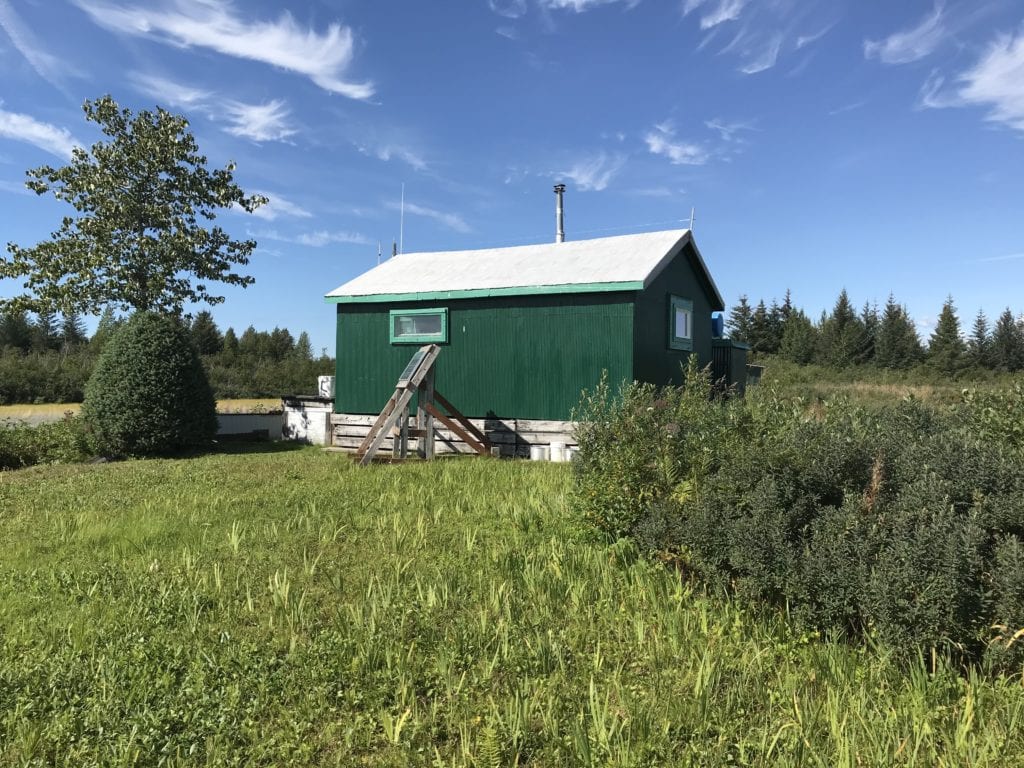
Last week’s sunny weather provided an opportunity to work on the roof of our duck cabin near Pete Dahl Slough.
Standing on its peak, with a nice westerly keeping the bugs away, pauses between application of Henry’s Aluminum Fibered Roof Coat gave time to reflect on a glorious four-day expedition back in July 1959 that gave birth to the shack.
I was 15, and it was the adventure of a lifetime. A year prior, our family had been one of the winners of a USFS Special Use Permit drawing to build at a site that already included three other cabins.
Dad and I had spent that ensuing year scrounging materials for the 16-by-24-foot structure, and became very adept at locating fallen-down structures that would be our main source of building materials.
One treasure trove turned out to be the remains of Vina Young’s old dairy barn on Lake Avenue, which had bit the dust in a strong southeaster. It turned out to be the source of all the metal that would cover the rough-cut lumber on the sides and roof of the cabin.
The construction crew consisted of Harry Curran, Smokey Bernard, Dad and I. With Mom, my sister Sharon, 9; and Smokey’s son Dennis, 10, the supporting cast. We stayed in one of the small nearby cabins that belonged to Dick Borer.
Getting materials there required an amphibious assault that would have made Douglas MacArthur proud. It involved deck-loading Harry’s boat, the Revenge, a 30-foot converted Navy shore launch, at the city dock, as well as running a small power barge also loaded with materials down Eyak River, to rendezvous at the mouth of the Eyak, and then cross the flats to Pete Dahl.
Not until early dawn the next morning, did we arrive at the slough bank of our cabin site. Four days later the cabin was entirely closed in.
Sixty-one years later, it took me two days to re-coat the roof.
Hmmm.

Looking out at a Delta covered with alder, willow and sweet gale, plus 40-foot tall cottonwoods and spruce, I could barely visualize when it was a grassy plain filled with shallow ponds and big tides flooding over it all. The 1964 earthquake uplift changed its habitat forever.
Standing on the peak also brought back another memory. I ended up being the one selected to nail the metal onto the roof. It was heavy-gage, and all prior nail holes had to be filled with lead-headed roofing nails.
The ridge cap was made by bending shorter sheets of metal to fit the slope on both sides and did not have holes necessary to fasten it in place.
The advice from the cutting-crew down below was to use a 16-penny nail to punch holes through the two layers of overlapping metal, before driving in the roofing nails.
Sounded simple, but wasn’t, especially when rainy. Midway through the project, the big nail slipped while I was trying to create a hole, and I proceeded to mash my thumb.
The result was utterance of a certain four-letter word that seems commonplace these days but was quite sacrosanct in the ’50s, and the startled ground crew looked up in dismay as a hammer went flying all the way over Harry’s boat and out into the slough.
What’s the saying about A Good Carpenter and His Tools?
A spare hammer came arcing up to land beside me.
That evening Smokey used a small hand-held brace and bit to drill a hole in my throbbing thumbnail to relieve the swelling and pressure. Sharon and Dennis watched in fascination as fluid spouted out.
Alas, I was too young for a shot of whiskey prior to the surgery.
The rest of the crew wasn’t.
Yet the roofing nails held true; for all these years later, under so many layers of coating that the valleys in the corrugated metal are no longer visible, they still are intact.
As are so many memories of a July in 1959.





